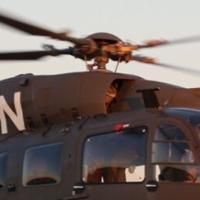A significant shift in policy for Army aviators has been announced, effective immediately, altering the start of their active-duty service obligation. According to Army Military Personnel (MILPER) Message No. 25-264, officers and warrant officers will now receive their aeronautical rating upon the successful completion of the Initial Entry Flight Training Common Core phase, rather than at the culmination of the entire flight school program.
This crucial policy adjustment extends retroactively, impacting all Army aviators who commenced initial entry flight training on or after October 1, 2020. For those affected by this change, their active-duty service obligation (ADSO) date will be officially revised to align with their new aeronautical rating date, offering a direct benefit to many soldiers currently navigating their training.
Maj. Gen. Clair A. Gill, the commanding general of the Aviation Center of Excellence and Fort Rucker, emphasized the underlying principle of fairness in this decision. “Adjusting the service obligation to match training realities reflects a commitment to fairness and respect for our Soldiers’ time and service,” Maj. Gen. Gill stated, highlighting the Army’s dedication to its personnel.
Historically, a 10-year Active-Duty Service Obligation came into effect for Army commissioned and warrant officers in October 2020. For Army aviators, the clock on this ADSO traditionally began only after they had completed the entirety of flight school, ensuring the Army’s return on its substantial investment in training these highly specialized personnel.
However, recent challenges, particularly a persistent training backlog at Fort Rucker, largely stemming from maintenance issues with the AH-64 Apache helicopter, have complicated this structure. Many flight school students from the 2023 year group are still awaiting the completion of their flight school, even as the center prepares to welcome the 2026 year group. This discrepancy meant some students faced extended ADSOs of 12 or even 12 and a half years, through no fault of their own, creating an unfair burden.
Subject matter experts conducted extensive research into the matter, examining U.S. Code, U.S. Army regulations, and Office of the Secretary of Defense regulations. They also analyzed the practices of other military services to inform their decision. Kenneth Hawley, Organization and Personnel Force Development director at the Aviation Center of Excellence, confirmed that “aeronautical rating is the requirement per code and regulation at (Department of the Army) level,” noting the Army was unique in its previous codification.
With the new policy, the ADSO for Army aviators will now officially commence at the conclusion of the Common Core phase of training, which precedes the advanced aircraft specialization. Hawley clarified, “Completion of Common Core gives you enough hours and experience to say, yes, you’ve already done a solo flight, we believe that is enough to get your aeronautical rating,” establishing a clear and earlier benchmark for service obligation.
Chief Warrant Officer 5 Michael Maine, chief warrant officer of the division, reiterated the strategic alignment of this change. “Everything will line up with the end of Common Core,” Maine stated, emphasizing the defined and system-inputted date for this phase. He added, “We are actually aligning with what the other services have,” drawing parallels to the Air Force, where fixed-wing training leads to aeronautical rating before advanced aircraft instruction.
Despite this significant shift in the ADSO start date for Army aviators, graduation ceremonies will still be held at the traditional conclusion of full training, with the new rating simply being backdated. To ensure family convenience and reduce logistical burdens, ceremonies will be “stair-stepped,” and graduation balls and related events will be coordinated to avoid requiring multiple trips to Fort Rucker for attending families.






Leave a Reply